OTS FFM
The OTS Full Face Mask (FFM) Program is a totally new RAID training course. Following our early unit-specific FFM program, this new offering teaches everything a diver (or instructor) needs to know to safey use the OTS Guardian and Spectrum FFMs. It provides detailed modules on the advantages of using a full face mask, including environmental protection, improved physiological comfort, and enhanced communication capabilities. The anatomy, setup, inspection, donning, adjustment, emergency procedures, post-dive care, maintenance, and communication techniques specific to using the OTS Guardian and Spectrum FFMs are included. The program is open to divers who are at least 15 years old and certified as an Open Water 20 diver or equivalent. Minors need guardian permission to participate. The purpose of the agency’s approach to Full Face Mask programs is to equip participants with the necessary knowledge and abilities for safe open water diving using the OTS Full Face Mask. The program covers various conditions, environments, and depths in accordance with the participant’s training, experience, and the specifications of the specific equipment manufacturer. The certification obtained through this program is unit-specific, meaning it enables divers to safely and efficiently conduct dives using an OTS Full Face Mask within the limits of their core level certifications. Other FFM units are supported through other RAID programs. The maximum training depth for confined water training dives is 6 meters/20 feet, and for open water training dives, it is 20 meters/66 feet. All training must be conducted by a RAID Ocean Reef or OTS full face mask instructor, with a certified assistant who is also a full face mask diver present. Contact your local RAID dive centre for more details.
Dive into a Slice of History.
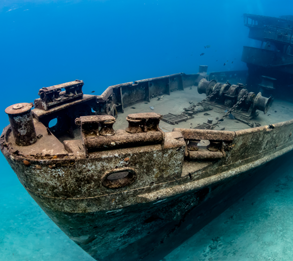
WRECK DIVING BRINGS THE PAST INTO SHARP FOCUS Of all the RAID specialties, WRECK DIVER is perhaps the one with the broadest scope when one considers the topics it covers and the ‘depth’ of what student’s experience. So much depends on where it’s conducted. Exploring shipwrecks on scuba offers a unique opportunity to uncover pieces of history frozen in time and hidden beneath the surface. These underwater time capsules give divers a chance to witness artifacts, marine life, and the fragility of human endeavour in a museum environment unlike any other. It’s a thrilling and adventurous experience that allows individuals to connect with the past in a tangible way, making it quite special for those interested in history, exploration, and the ocean. The allure of shipwrecks lies in their captivating stories and the mystery tied up in their journey from the shipyard to the bottom of the sea… or lake. Every shipwreck has its own history, from the circumstances of its sinking to the lives affected by that tragedy. Even so-called intentional wrecks sunk specifically as dive sites have an interesting story to tell us. Diving wrecks allows us to immerse ourselves in tales of adventure, loss, and the treasure of history. The sense of exploration and discovery makes diving shipwrecks a fascinating and alluring activity for any level of diver. And there are many incredible locations around the world known for outstanding wreck diving experiences. Some popular destinations include: This Specialty is designed to extend your knowledge and skills of diving to allow you to dive on wrecks safely without penetrating them. It develops the knowledge required to plan, prepare and analyse for your dive to reduce stress and confusion, allowing you to enhance your diving experience. This specialty can be run for any certified diver who has the equivalent of a RAID Open Water 20 Diver. For those interested in visiting inside shipwrecks, RAID also offers ADVANCED WRECK a full overhead environment program demanding special skills and equipment.
Why DECO 50 Might Be Right For You
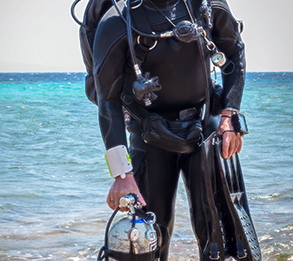
IF YOU’RE AFTER MORE BOTTOM TIME, CHECK THIS OUT This Speciality is for divers who are ready to experience the thrill of getting more bottom time and venturing to a maximum depth of 50 metres (165 feet). RAID Deco 50 will introduce students to the skills and techniques to plan and carry out staged decompression dives using mixed gases including helium to reduce narcosis, threat of oxygen toxicity, and to significantly lessen the work of breathing (a major contributor to carbon dioxide buildup). This program covers: Remember, before enrolling in any diving course, make sure you meet the prerequisites and are comfortable with the potential risks associated with deep and decompression diving. Taking a RAID Deco 50 Diver course can provide several benefits. For example, this course will enhance your diving skills and knowledge, especially related to deep diving and decompression diving using breathing gas mixes. During this course students focus on Safety Training: to safely plan and execute deeper dives with required decompression stops, emphasizing team protocols and procedures. Graduates from this program enjoy Extended Dive Times by understanding and using decompression gas mixes to can extend allowable dive times at greater depths compared to traditional air diving. Diving a little deeper and longer than untrained divers opens up Exploration Opportunities. Using the training from this course, students are able to explore a wider range of dive sites that are deeper and require decompression stops. Our Deco 50 program highlights a different approach to learning staged decompression diving, and has been written with the new technical diver in mind, so you benefit from a training program designed from scratch using the most up-to-date techniques and technology. Unique to RAID, divers wanting to participate in technical open circuit programs and who are certified in Deep 40, Master Rescue and Nitrox may bypass the Deco 40 program. The course has modern, graphic rich manuals which explore and introduce a modern skill set placing emphasis on managing skill mastery while neutrally buoyant. The skills themselves have been up as well with desire being that RAID divers will use a similar equipment configuration and perform the skills in a similar fashion. The Manuals Are Also “User Friendly” For Sidemount Divers Prerequities Documented proof of prerequisite requirements needs to be presented to the Dive Centre for approval prior to any in water training. The Program Employs the Following Gases Oxygen enriched gas (EANx / Nitrox) mixes from 21% to a maximum of 50% oxygen content. A maximum of 27% Helium content. Course Content Equipment Requirements The above is subject to the RAID General Diving Standards and change without notice. Register for FREE at www.diveraid.com To find out more about this course just contact us here Be unafRAID and get started today!.
WHY RAID
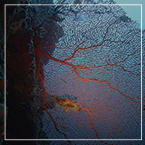
REASON #127 Sometimes people ask why we teach open water students not to kneel on the bottom. The answer is stunning.
As Deep As We Go…
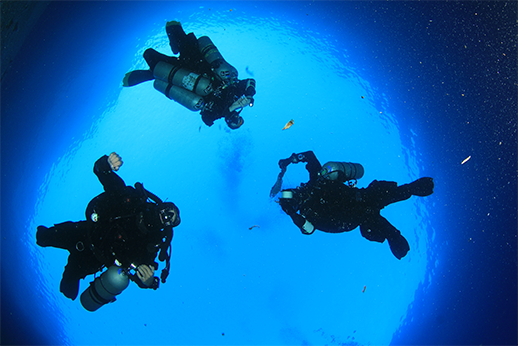
HYPOXIC TRIMIX OPEN CIRCUIT TO 100 METRES Hypoxic trimix is a highly specialized course and at the pinnacle of technical diver training. While it may seem just more of the same compared to other trimix open-circuit courses, because part of the focus of this course is on diving with gas mixtures containing extremely low levels of oxygen, it calls for extreme caution and highly skilled instruction and students at the top of their game! COURSE DESCRIPTION Something to note about this new RAID course is that it offers two certification options: Limited Hypoxic Trimix Open Circuit Diver (80m/265ft Hypoxic Trimix Open Circuit Diver (100m/330ft. (Check with your local RAID Dive Centre to see which is best suited to your needs.) Our Hypoxic Trimix Open Circuit Program and the Limited Hypoxic Trimix Open Circuit Program are advanced diving courses designed to equip divers with the skills and knowledge necessary to plan and execute dives to depths beyond 60m/200ft. This program builds upon the theoretical knowledge and skills learned in previous diving courses and introduces new techniques specific to deep decompression diving using multiple decompression strategies and gases. This is a program aimed at experienced divers who are already comfortable with planning deep open circuit dives and managing a complex equipment package, and operating as part of a team. Throughout the course, divers will review and refine existing skills, with particular focus on contingency planning, multiple gas switches, pin-point buoyancy control while exchanging stage cylinders, DSMB deployment from depth, and support planning. The program emphasizes the importance of proper equipment setup, pre-dive checks, gas analysis and labeling, as well as effective communication and problem-solving techniques. By the end of the program, divers will have the confidence and competence to safely navigate the challenges of deep open circuit mixed gas diving. One challenge of diving to extreme depths is that the partial pressure of oxygen in a standard gas mix would be beyond what’s considered safe levels and the likelihood of oxygen toxicity is unsupportably high. Proper training ensures that divers understand how to safely use these gas mixtures, calculate decompression obligations, and handle any emergencies that may arise. If you are considering hypoxic trimix training, it’s essential to enroll in a reputable training program with experienced instructors and follow all safety protocols to minimize risks associated with deep technical diving. Deep trimix diving also brings into play many other psychological and physiological challenges that this program will prepare you to meet and manage. Let us know if you need more information or have any specific questions about hypoxic trimix training!
Lungfish Dive Systems Achieves CE Certification
MAY 1, 2024 RAID is proud to offer factory sanctioned training on this innovative unit… MORE INFORMATION>>>
Dynamic Apnea adds another dimension to breathhold
RAID ADDS ANOTHER JEWEL IN ITS ONE-BREATH COURSE LINE-UP We are pleased to announce the launch of our Dynamic Apnea program, following the recent introduction of our Static Apnea program. This new offering further expands our range of training opportunities for freediving enthusiasts, and we are excited about the possibilities it presents for divers looking to enhance their skills and experiences in the world of apnea diving. Dynamic Apnea training is a type of breath-hold training that focuses on improving a person’s ability to hold their breath while moving underwater, typically used in freediving and swimming disciplines. At its fundamental level, it involves swimming underwater for a distance or time without taking a breath. Dynamic Apnea training can help enhance breath-holding capacity, increase lung efficiency, and improve overall performance in all water-based activities including scuba diving. Description: The RAID Dynamic Apnea Specialty course is a comprehensive training program designed to provide freedivers with the skills and knowledge necessary to excel in dynamic apnea swims. The course focuses specifically on dynamic apnea with bi-fins (DYNB) and dynamic apnea no fins (DNF). Participants will learn proper techniques, including buoyancy control, streamlining, and finning techniques. The course also covers important safety considerations, such as recognizing signs of hypoxia and performing rescue techniques. Additionally, the course emphasizes the importance of relaxation and mental focus, as well as the buddy system for supervision and support. Overall, the RAID Dynamic Apnea Specialty course offers divers the opportunity to improve their technique, enhance their performance, and enjoy the thrill of dynamic apnea. In freediving, Dynamic Apnea is a discipline where divers aim to cover the greatest horizontal distance underwater in a pool on a single breath, using fins for propulsion. This discipline requires both physical fitness and excellent breath-holding techniques. Divers streamline their bodies to minimize water resistance, use efficient finning techniques, and focus on relaxation and mental control to conserve oxygen and increase their distance. Dynamic Apnea training helps improve oxygen efficiency, lung capacity, and breath-holding ability, ultimately enhancing performance and safety during freediving activities. As with any activity in RAID’s curriculum, it’s important to practice Dynamic Apnea under the guidance of experienced instructors to ensure safety and proper technique. Dynamic Apnea at its highest level is a sport of records. The farthest freediving dynamic apnea with fins (male) is 301 metres, achieved by Guillaume Bourdila (France) at the 28th AIDA World Championship in Burgas, Bulgaria, on 24 June 2022. Bourdila surpassed the existing AIDA record of 300 metres, which had stood since 2016. Magdalena Solich-Talanda set a new DYN woman’s world record of 277 metres during a freediving competition in the Czech Republic, also in 2022. ASK YOUR LOCAL RAID DIVE CENTRE FOR MORE DETAILS>>>
A True Champion
BILL MARDEN HAS SUPPORTED RAID SINCE ITS BEGINNING How many people have had a Dive Centre for almost half a century and taught for most of it!? Perhaps only a stubborn, belligerent, bloke could do this, but he’d have to be honest, hardworking and a great Instructor. Meet Mr Bill Marden owner of SubAquatics in Sydney. A well-educated man himself, as a gunsmith and engineer he successfully combined both businesses with a dive centre. His reloading tools are well renown and his engineering feats are exported worldwide. A great seaman, at one time owning three boats, with skills that could have been garnered from serving with Lord Nelson (though he missed that opportunity by just a few years!), he was a pioneer around Jervis Bay and Sydney, finding and exploring sites and wrecks, many still dived today. An original FAUI (Federation of Australian Underwater Instructors) member, Bill is his own man with traditional values and teaches diving as he lives with a “do it right or don’t do it” attitude. In the early days he was always seen around Sutherland Shire and no doubt was the envy of other dive shops as he had a great rapport with the university students which meant he frequently had courses during the week as well as weekends. His students all know you pay for his course but earn the certification. In 2014, after suffering what Bill considered to be the “increased commercialisation and market driven” attitudes of major training agencies which were driving standards of divers down, he happily joined the RAID evolution when it had its re-launch to the world and embraced (even as an ‘old dog’) the new approach to training. He freely admits he learned new skills through RAID training and qualified as Sidemount, Technical Instructor and Rebreather diver. All of us at RAID agree that Bill has no boundaries as long as his ethical and moral compass is not asked to waiver. When working with Bill, he was quite often one of the oldest participant, but he always had the brightest outlook and the youngest approach. He embraced new teaching styles even when they differed massively to those he had practiced for decades. If Bill respects you, he will follow you into the gates of hell, he is a friend for life. Since 1965 when Bill began diving he has completed more than 7000 dives, and is an accomplished UW photographer who loves wrecks. The last few years Bill has suffered some health issues and is not actively teaching or working but in his true manner has told the doctors more than once that he’s not ready to hang up his reg and continues to plan dive trips! He doesn’t believe in ‘luck’ but we wish him all the best regardless and hope to see him in the water soon. Bill is a true Champion of diving and RAID are honoured to work with him.
A Note About Personal Dive Computers

PDCs ADD TO DIVE SAFETY… BUT PLEASE DO YOUR HOMEWORK Recently, there have been a few social media posts that send mixed messages about the roles and benefits of personal dive computers to recreational divers. It could be that the winter layoff in the northern hemisphere has ‘rusted’ familiarity with PDCs for some divers, and they have forgotten the basics, but we figured a quick recap might do some good. Let’s start by saying that RAID is a strong advocate for PDCs. We require students to understand and use them from OW20 on. (Although standards do allow basic divers to substitute depth gauges/bottom timers and traditional dive tables, PDCs are recommended even at beginner levels nevertheless.) Secondly, regardless of how many dives you have, how long you’ve been diving, or which PDC you use, if it and you have been dry for a month or two, a good plan is to reread the owner’s manual! Especially the section on setting conservative levels, and how that translates to your well-being! You might be reminded of something important. All that aside, most of us feel a whole lot more comfortable, and protected with a PDC helping on our dives. And here’s why However, that said, in spite of the many benefits PDCs provide, and the safety advantages of having real-time information about one’s dive, and instant feedback on decompression status, they’re not a panacea. Wearing a PDC cannot guarantee immunity to DCS; nothing can. Decompression sickness is one of the risks we can manage but never iraticate. One another note: PDC are not immune to suddenly going pear-shaped… especially if battery warnings are ignored! If your computer screen goes black part way through a dive, try to relax. As long as you’ve been diving within recreational limits, a dodgy PDC is an inconvenience rather than a dive emergency. Step one, your dive is over, no questions. Step two, check your cylinder pressure because having plenty to breathe is critical. Once that’s done, and you know you have plenty of gas, you’re golden. Signal your buddy, let them know you have an equipment issue, and then make a controlled ascent to the safety stop. Execute it (an extended stop would be best as long as you have sufficient gas), surface normally, establish buoyancy and explain the issue to your buddy. You might apologize and offer to buy the dessert at supper or something comparable. And as for fixing the issue, chances are that the problem is a dead battery… and that’s a simple fix. However, to be extra safe, it does mean you are out of the water for 24 hours. Hope this clears things up for anyone who’s getting back in the water after a long dry spell. #theraidway™
Which brand is your choice?

FOR THE PROFESSIONAL, IT ALL DEPENDS ON WHAT WORKS FOR THEM Some choices simply seem odd to those of us looking at the world from a different vantage point. For example, I have never developed a taste for the ubiquitous Canadian morning eye-opener, a “double-double” from Tim Horton’s. For those readers unfamiliar with the Tim’s franchise — a nationwide operation — a “double-double” is a large coffee with two shots of cream and two spoons of sugar. And although I understand that denouncing Tim Horton’s coffee in a public forum, puts my Canadian citizenship in jeopardy, I can’t drink it… not even one mouthful. Sorry, Canada (and many franchises operating in a handful of North-eastern states), I find it awful. It isn’t to my taste. Obviously, since Tim’s is popular enough to be the brand of choice for Canadians from sea to sea to sea, there are more than a few people who’d disagree and I expect to get messages to that effect any day now! But isn’t it great to have freedom of choice? What brought this to mind is an active thread posted on an online dive industry job market. Someone posted a “my-coffee-is-better-than-your-coffee” type of message. Of course, they were comparing certifying agencies and not coffee shops, but the intent and audience reaction were about the same. Very few people agree on which of the roughly 120 dive agencies in the world, really is the best. No problem identifying the biggest, but biggest is not the best. At least not for everyone. The argument that a single option is fine, the status quo is king, and universal brand recognition trumps everything, is… well… a bandwagon fallacy. It’s the same as saying that because Tim Horton’s coffee is the most popular in Canada, ergo, it must be the best. It ain’t! I wouldn’t even try to guess the reasons why a dive shop owner on Vancouver Island, British Columbia, chooses to certify through XYZ agency, while his sister, an instructor in Come By Chance, Newfoundland, prefers to work with ABC. That’s entirely up to them. As long as they understand that what makes sense to them, may not work for the shop down the street or one situated on the opposite coast. And in fairness, they have to accept that choice is good. It’s what keeps the industry vibrant. Without choice, standards, teaching methods, the way we adapt to new technology would become stagnant. That would be a disaster. Change and innovation are good. And I think it’s much harder for the established brand leader to try different things than it is for a smaller operation with more of a ‘bespoke’ approach. But, that’s just an opinion. When I lived in Maine, I bought a bumper sticker from a beautiful little coffee shop in a nearby college town, which read: “Friends don’t let friends drink Starbucks.” I have to bite my tongue sometimes, because I feel the same way about teaching for one or two of the major players in the dive industry. Truth is, I have strong views on the subject, but of course, I’m biased… and in the final draft, making a poor choice is anyone’s prerogative. I believe instead, it’s best to work to bring positive CHANGE to the dive industry, but respect another’s choice to stick… well, to stick in the mud. And if you ever find yourself driving through Toronto’s Little Italy district, there’s this little cafe… – Steve Lewis – #TheRAIDWay™
